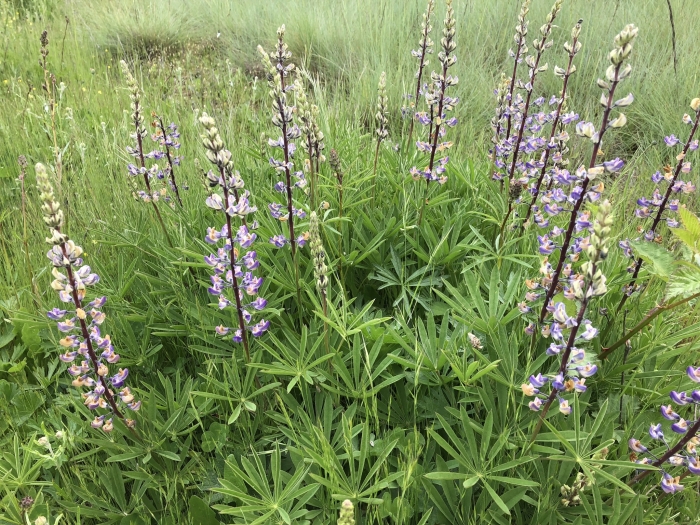Sulphur Lupine
(Lupinus sulphureus)
Sulphur Lupine (Lupinus sulphureus)
/
/

© Matt Benotsch
CC BY 4.0
Image By:
© Matt Benotsch
Recorded By:
Copyright:
CC BY 4.0
Copyright Notice:
Photo by: © Matt Benotsch | License Type: CC BY 4.0 | License URL: http://creativecommons.org/licenses/by/4.0/ | Uploader: mbcor | Publisher: iNaturalist |

























Estimated Native Range
Summary
Lupinus sulphureus, commonly known as sulphur lupine, is a perennial herb that is native to open woodlands, grasslands, and sagebrush steppe ecosystems in western North America, ranging from southern British Columbia through Washington and Oregon to California. It typically grows 16-31 inches tall and features palmately compound leaves with 7-13 leaflets. From late spring to early summer, it produces erect spikes of showy yellow flowers that are attractive to pollinators. Sulphur lupine is particularly important for the endangered Fender’s blue butterfly, whose larvae depend on the leaves as a food source.
Sulphur lupine is valued for its bright yellow blooms and its ability to adapt to poor soil conditions, making it an excellent choice for restoration projects and native plant gardens. It is often used to stabilize soils and enhance biodiversity. In cultivation, it requires well-drained soils and full sun exposure. While it is drought-tolerant once established, regular watering can promote more vigorous growth. This species can be susceptible to root rot in poorly drained soils and may attract aphids. It is also important to note that many lupines can be toxic to livestock and pets if ingested.CC BY-SA 4.0
Sulphur lupine is valued for its bright yellow blooms and its ability to adapt to poor soil conditions, making it an excellent choice for restoration projects and native plant gardens. It is often used to stabilize soils and enhance biodiversity. In cultivation, it requires well-drained soils and full sun exposure. While it is drought-tolerant once established, regular watering can promote more vigorous growth. This species can be susceptible to root rot in poorly drained soils and may attract aphids. It is also important to note that many lupines can be toxic to livestock and pets if ingested.CC BY-SA 4.0
Plant Description
- Plant Type: Herb
- Height: 2-4 feet
- Width: 2-3 feet
- Growth Rate: Rapid
- Flower Color: Yellow
- Flowering Season: Spring, Summer
- Leaf Retention: Deciduous
Growth Requirements
- Sun: Full Sun, Part Shade
- Water: Medium, High
- Drainage: Fast, Medium
Common Uses
Bee Garden, Butterfly Garden, Low Maintenance
Natural Habitat
Native to open woodlands, grasslands, and sagebrush steppe ecosystems in western North America
Other Names
Common Names: Sulphur-flower Lupine, Kincaid’s Lupine
Scientific Names: , Lupinus sulphureus, Lupinus sulphureus var. applegateianus, Lupinus sulphureus var. echlerianus,
GBIF Accepted Name: